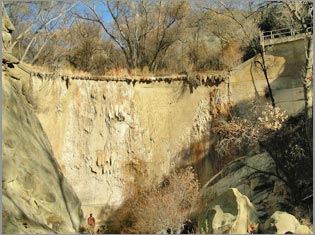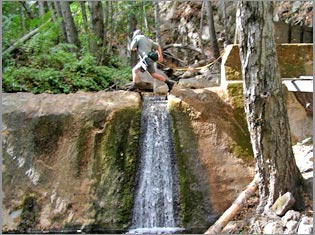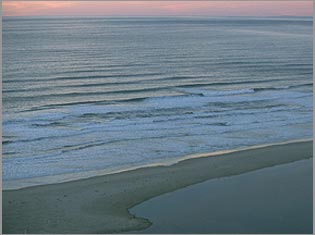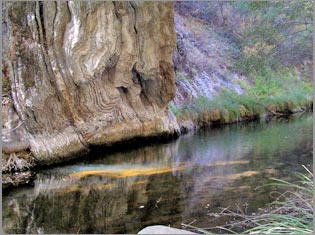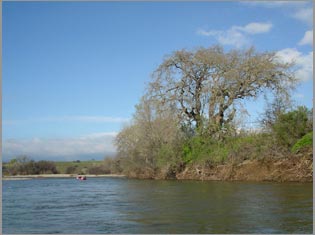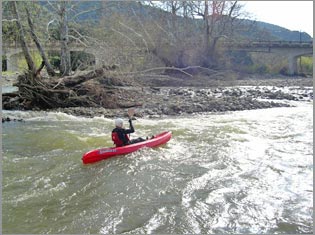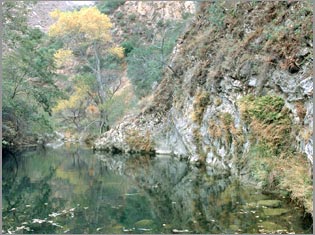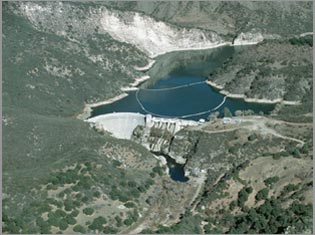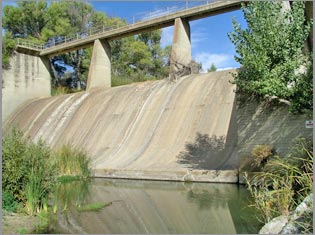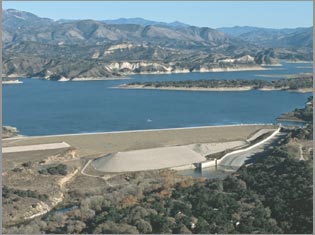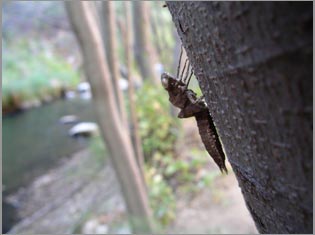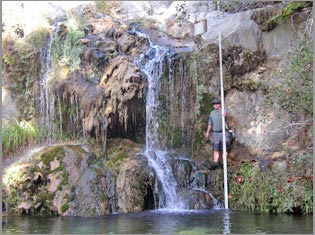
Santa Ynez River Steelhead Assessment and Recovery Project
Santa Barbara County, CA
Report: Steelhead Migration Barrier Inventory and Recovery Opportunities for the Santa Ynez River, California 2004 ![]() 14mg
14mg
Only fifty years ago, thousands of adult steelhead trout (Oncorhynchus mykiss) made their annual spawning migration up the Santa Ynez River. In the 1940’s the Santa Ynez River was thought to have the largest run of steelhead south of San Francisco Bay. Prior to the completion of Cachuma Dam (1953), the steelhead run on the Santa Ynez River was estimated to be as high as 25,000 adults (Titus, et al 1994). This estimate was made decades after the completion of Gibraltar Dam (1920), which blocked much of the upper watershed, thus the historic run size prior to any modifications on the river were likely much higher. Anthropogenic migration barriers on the Santa Ynez River prevent steelhead from accessing a majority of their habitat and has brought the steelhead run close to extinction. The upper Santa Ynez River watershed remains in a relatively natural and protected state within the Los Padres National Forest. High quality habitat also occurs on private land in the lower river and tributaries. Some habitat above complete barriers to steelhead continues to support a naturally reproducing rainbow trout population that still retain ancestral ties to the native steelhead population. This rainbow trout population may be contributing outmigration of individuals to the persistent remnant anadromous steelhead population downstream of Bradbury Dam. Observations of O. mykiss that were made while surveying migration barriers are noted within the report.
This report provides information about the location of migration barriers and their impacts on steelhead and rainbow trout movement in the watershed. Upstream natural limits are identified or estimated to identify historic steelhead distribution. Individual barrier assessments within this report provide barrier locations, photographs, descriptions, fish passage diagnosis, and site-specific recommended actions. Large dams, road crossings, grade control structures, flood control channels, and water releases from dams are identified as the main migration barriers and limiting factors to steelhead within the watershed. While improving steelhead migration to available habitat below Bradbury Dam is important to preserving the remaining population, providing additional access upstream of impassable barriers to former spawning and rearing habitat is essential to restoring a wild, self-sustainable steelhead population to the watershed.
|

